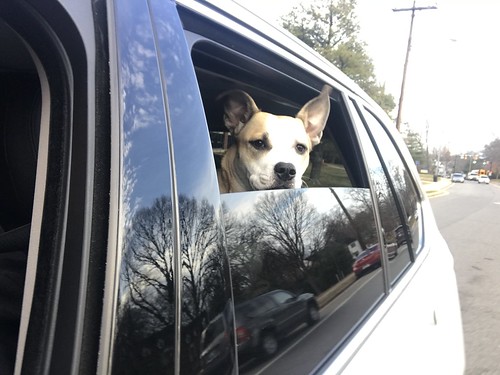When we think of our family we always include our fur babies. So of course we want to keep them safe that’s why I think these 6 tips to keep pets safe are great for preparing for storm season. As always thanks for visiting today.

Six Tips To Keep Pets Safe During Storm Season
While no one is immune from the devastation of a natural disaster, preparing before a storm hits is key to keeping everyone in your family including your pets safe. It’s even more important now in an era of social distancing due to the COVID-19 pandemic that pet parents have a plan to keep their furry family members out of harm’s way if forced to take shelter elsewhere.
“What’s good for us is good for our pets,” said Kris Kiser, President of The TurfMutt Foundation, an environmental education and stewardship program, and President and CEO of the Outdoor Power Equipment Institute (OPEI), an international trade association representing manufacturers and suppliers of power equipment, small engines and battery power, utility and personal transport vehicles, and golf cars. “My dog is a member of the family, so we have a plan for keeping her safe in the event of an emergency, and we encourage all pet parents to do the same.”

Here are six ideas from the TurfMutt Foundation to include pets safety when mapping out a disaster preparedness plan.
• Have pets microchipped. In the event of an emergency—natural or otherwise—you want to ensure your pet can get back to you if you’re separated. Collars and ID tags, though important, can break or detach. Microchips—computerized and scannable implants about the size of a grain of rice—are more fool-proof since they’re inserted under your pet’s skin.
• Bring pets inside at the first sign of danger. Disasters can be disorienting for pets, and they could run away or hurt themselves reacting to loud noises and strange changes to their landscape. Also, rain, flying debris and high winds pose a danger.
• If you have to leave, keep pets with you. Leaving your pets behind during a natural disaster is never a good idea because they could escape or become exposed to a number of life-threatening hazards. Keep them on a leash or in a pet carrier so they don’t escape, even if you are in a “familiar” neighborhood.
• Determine where you’ll go. You need a Plan B if you are advised by government officials to leave your home. Due to the COVID-19 pandemic, staying with family or friends may not be an option. Not all emergency shelters will accept pets and physical distancing guidelines may reduce capacity in public shelters. Make a plan and develop a list of pet-friendly hotels open for business and outside your immediate area that you might evacuate to.
• Create a pet-friendly resource list. Research a list of veterinarians in the area should your pet need medical care (your regular vet may have some recommendations). Also, figure out which boarding facilities are nearby in case you need to separate from your pet for a time.
• Pack an emergency bag. Pack emergency provisions for pest well in advance of a catastrophe so you can evacuate your home quickly if needed. Choose an easy-to-carry bag, label it and keep it where everyone in the family can find it quickly. The bag should include a pet first aid kit; enough food and bottled water for a week (rotate this every couple of months to keep it from going bad); medications (check periodically to ensure medicines in your emergency bag don’t expire); cleanup supplies; food and water dishes; bags (or litter for cats) for collecting waste; an extra collar and leash; photocopies of medical records; towels; recent photos of your pets; and a favorite toy or chewy for comfort. It’s also a good idea to have a sturdy carrier or crate for each pet.
By keeping in mind these ideas, pet preparedness plans can be put into action ahead of a storm instead of spending valuable time trying to determine what needs to be done to best protect pets.
Learn More
For facts, tips, and fun activities for families from the TurfMutt environment education and stewardship program, visit www.TurfMutt.com.

